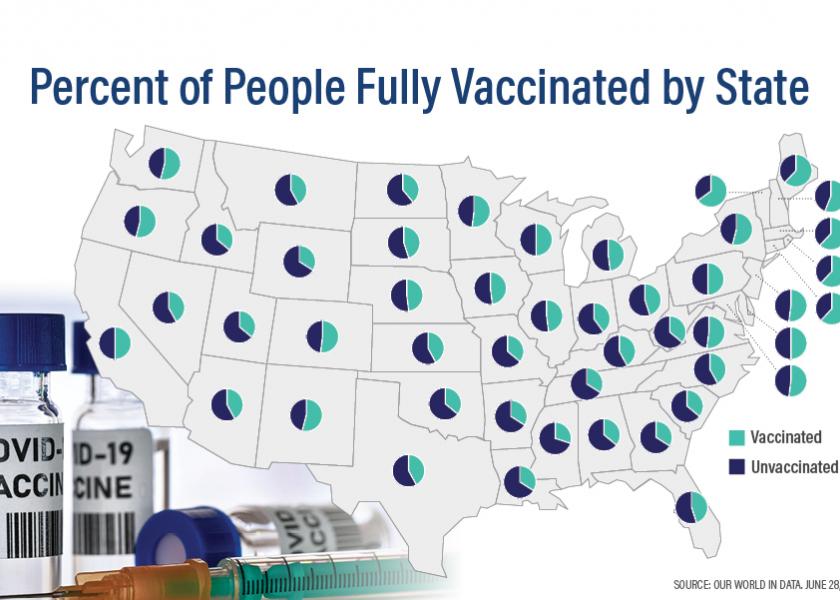Rural America Lags Far Behind National Average In COVID-19 Vaccination Rate

Compared to the national average of 70%, rural America falls behind with only 34% of the adult population vaccinated. Nearly 100% of recent COVID-19 hospitalizations in rural communities are those who are unvaccinated.
Alan Morgan, National Rural Health Association CEO, says the COVID-19 pandemic has especially been hard on rural populations citing a 28% higher mortality rate for rural counties compared with urban counties.
“This has hit rural [communities] really hard,” he says. And the data show rural populations may continue to be at a higher risk due to lower vaccination rates and the more infectious Delta variant.
Based on the daily CDC data for rural counties, Morgan is concerned about a summer surge in infections. He says the best defense against the spread and lower the likelihood of people needing hospitalization is vaccination, and so far, rural populations have a 40% lower vaccination rate for adults.
Rural populations are at higher risk of hospitalization and mortality from COVID-19 due to lower vaccination rates.
“I am hearing consistently from our rural hospital CEOs and our clinicians that right now somewhere between 95% and 100% of the patients that are hospitalized for COVID-19 in small towns have not been vaccinated,” he says. “Nationally, we’ve got almost 70% of our adult population vaccinated. Well that's misleading. In rural America we're right at about 34% vaccinated.”
In particular, Morgan is encouraging unvaccinated adults over the age of 40 to think twice about getting vaccinated because of the Delta variant. Because of its highly contagious nature, he says the Delta variant is necessitating those who remain unvaccinated to wear masks when indoors and in enclosed spaces.
“A lot of our members are really worried about the testing is tremendously down, and we don't know the extent of a spread, so you can't inform the community when you're flying blind and facing a variant that is much more transmissible than anything we've seen so far,” he says.
Morgan is hoping the infections continue to stay below the high levels seen last winter. However, he’s concerned lower rural vaccination levels and the Delta variant are working in tandem to form a summer surge.
“We're just seeing a real good example of the effectiveness of keeping you out of the hospital by these vaccinations. And now we’ve got the Delta variant really surging in the Midwest, causing a lot of concern,” he says.
You can listen to the full interview with Morgan and Chip Flory here:







